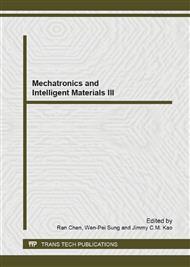p.1418
p.1423
p.1428
p.1433
p.1437
p.1443
p.1450
p.1454
p.1458
Natural Vibration Analysis for Gun Using Rigid-Flexible Coupling Multi-Body Modeling Method
Abstract:
To study the natural vibration characteristic of gun systems, the rigid-flexible coupling multi-body modeling method for gun system was developed. Using multi-body theory the rigid-flexible coupling chain structure of gun was established firstly, and the dynamic equation in closed form of gun system during launching was provided by Lagrange’s method of the second. Based on above, the analytic expressions of eigen-value equations for gun system were presented. And using that, the natural vibration frequencies of gun system were calculated, and the natural vibration characteristics were analyzed. The analysis indicates that the calculating results achieved using rigid-flexible coupling modeling method are more close to the experimental results compared to pure rigid modeling. Therefore it is essential to consider the flexible deformation of barrel if we want to acquire the natural vibration characteristic of gun system more accurately. Furthermore, the investigation in this paper also shows that the rigid-flexible coupling multi-body modeling method is an effective method for the dynamic analysis of gun system, and can be used to research the dynamic characteristic of other mechanisms as well. The model, method, and results presented in this paper have significance to correlative engineering research, and provide a new technical way for improving on the design of gun.
Info:
Periodical:
Pages:
1437-1442
Citation:
Online since:
June 2013
Authors:
Price:
Сopyright:
© 2013 Trans Tech Publications Ltd. All Rights Reserved
Share:
Citation:


